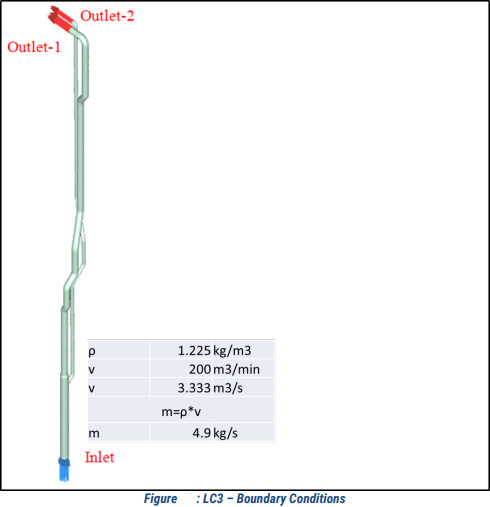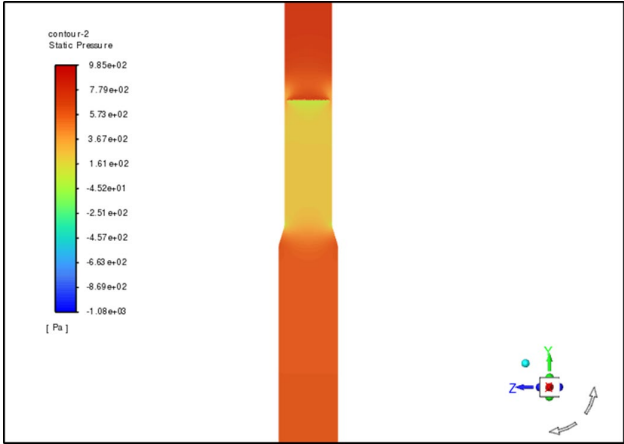Computational fluid dynamics (CFD) is a technique of modelling and simulation based on numerical modelling for fluid flow. In CFD, basic three steps are involved i.e., Pre-Processing, Solver and Post Processing. This work specifically addresses the CFD analysis of incinerator chimney. The three dimensional steady state CFD analysis is carried out using ANSYS-FLUENT software to predict the pressure drop in the chimney.
The CAD model was received by client, which was used for making internal fluid volume. A Computational Fluid Dynamics (CFD) domain (i.e., enclosed volume) is the portion of space where the solution of the CFD simulation is calculated. The domain is created to perform the internal flow analysis which is shown in the below figures. The dimensions of domain are selected from experience and best practices of CFD.
Analytical Methodology:
• The analysis aims to calculate the pressure drop across the chimney.
• The pressure drop analysis of the chimney using CFD, involved multiple load cases.
• In the first load case, the pressure drop was determined by performing CFD analysis on the existing model. • Subsequently, an internal fan (Axial Blower) was incorporated into the model to achieve the desired pressure drop.
• Multiple iterations were conducted, considering various fan performance data, leading to the selection of a specific fan configuration that successfully achieved the desired pressure drop across the chimney.
• In the fourth load case, the pressure drop was determined by performing CFD analysis on the new blower location model.
• An inlet volume flow rate of 200 m3/min is applied at the inlet.
• The outlet is taken as pressure outlet.
• Rest all surfaces are treated as walls with no-slip condition.
Discretization is a process of dividing a whole domain into number of control volumes. Polyhex core mesh of the model geometry is generated by using Ansys Fluent meshing software. In setting up case for Reynolds averaged Navier-Stokes (RANS) analysis for CFD, we usually incorporate a prism layer (also called inflation layers), along wall surfaces to capture boundary layer effects in better detail. Minimum orthogonal quality of 0.2 is maintained in the discretized domain.
CFD analysis of chimney structure for various models is performed to calculate pressure drop.
• In the first load case, the pressure drop was determined by performing CFD analysis on the existing model.
• In Second Load case, an internal fan (Axial Blower) was incorporated into the model to achieve the desired pressure drop •
In Third Load case, a 200 NB additional line from the 500 NB pipe parallel to incinerator exhaust till the top was incorporated into the model to achieve the desired pressure drop.
• In Fourth Load case, the new location of fan is selected as maintenance point of view that is 8 meters Height from the inlet of incinerator.







Comments